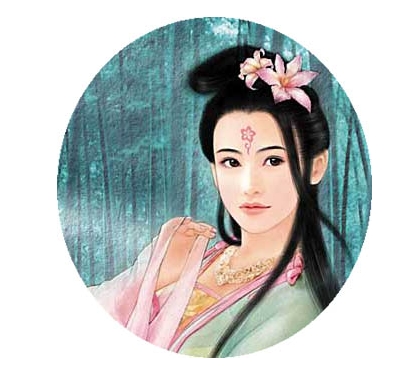In ancient China, especially in the Tang Dynasty, there were seven steps in cosmetic makeup for the belles: powder base, applying color to the face, eye-brow darkening, applying "forehead gold" or "floral twinkle/gold", painting the dimples, decorating the cheeks and applying lip color.
If eyes are the window to the soul, lips are the mirrors of one's character and temperament. Being an important part of face decoration as shown above, lip makeup enjoys a long history and has various patterns in different periods.
It is believed that lip makeup was originally practiced to please the gods in religious occasions. As time passed by, people realized that it could liven up one's spirit and sometimes even could reveal one's social status. As a consequence, different materials for lip beauty products were constantly tested and used to make the lips red and bright, creating the Chinese art of lip makeup.
The lip beauty products in ancient China were normally called "lip balm" or "mouth balm", as recorded by the Chinese dictionary Shiming (or: Explanation of Names) written by Liu Xi in the Eastern Han Dynasty (AD25—AD220).

It should be pointed out that, in its early stage, as with most other types of makeup, lip balm was typically, but not exclusively, worn by women. This paste-like and sticky mixture was applied to relieve chapped or dry lips caused by dry air, cold temperatures or wind. The primary purpose of lip balm is to provide a layer on the lip surface to seal moisture in, protecting them from external exposure.
During historic times, the raw material was vermilion, whose chemical composition is mercuric sulfide (HgS). It was produced in Hunan, Guizhou and Sichuan Province and bears the perfect color for ideal lips. However, lacking strong adhesion, vermilion is easily dissolved on warm lips so its shiny red could not last long. Therefore, later on, the ancient people added mineral wax and animal fat, making vermilion water-proof with strong adhesive force.
The early lip balm was not like the lipstick we see today, but was a paste held in a particular container. After Sui (AD 589 — AD 618) and Tang Dynasties, some lip balm was processed into solid substance, tubular in shape. Being handy, this new type soon gained popularity. The production of lip balm has not undergone great renovation only until modern times.
The lip balm in ancient China also bore fantastic fragrance. In the North Dynasty (AD 386—AD 581) raw materials included ageratum and clove. In the Tang Dynasty, artificial flavors were added to the lip balm.





